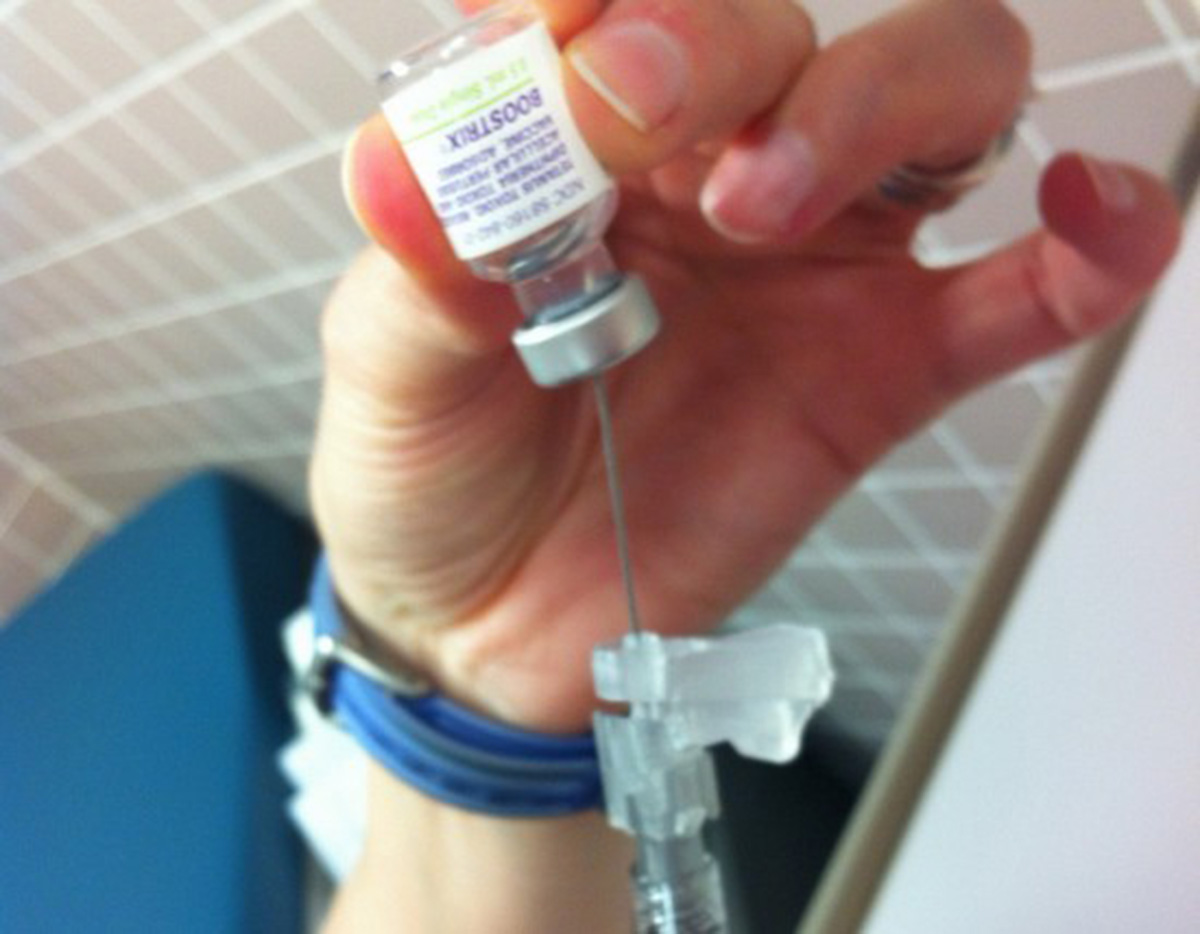Table of Contents
For several decades, nearly every school child was given a diphtheria-pertussis-tetanus vaccine, and all three diseases became very rare. There were no widespread epidemics of pertussis/whooping cough for many years. One shot offered protection from diphtheria for at least 10 years, although the "whole cells" of the diphtheria bacterium used to make the vaccine sometimes caused pain and redness at the injection site. To avoid discomfort from vaccination, public health officials in Japan started using an "acellular" pertussis vaccine, made with pieces of the bacterium, in the early 1980's. American public health officials started using the more expensive, Japanese vaccine about 1995.

And epidemics of whooping cough started about 5 years later. Scientists now know that the "acellular" vaccines that don't carry a high risk of inflammation--when I was in the first grade, most kids who got the shot had sore arms for several days--also don't offer long-term protection. Children who were assumed to be not at risk for getting the disease catch it in their kindergarten or elementary school classrooms, and adults whose lungs are sufficiently well developed that they don't show symptoms can give the infection to vulnerable infants, toddlers, and children without even knowing they have it.
Not Just a Problem of Vaccine Avoidance
Children whose parents do not allow them to get vaccinations, of course, can catch infections they pass on to other children. At first, scientists believed that the recent surge in pertussis infections was due to vaccine protestors. As researchers at the Office of Vaccines Research and Review in the Food and Drug Administration took a closer look at their data, however, they found that the problem was with the vaccine itself.
Newly vaccinated children don't get symptoms when they contract the whooping cough bacterium, but they can spread the disease to others. Children who are not vaccinated can actually catch the disease from children who are.
Read More: Pertussis Vaccine: DTaP Vaccination Protects Children Against Diphtheria, Tetanus, and the Bacteria
So, What Should Parents Do?
There are two ways to prevent infection in a child or yourself. One is to get the vaccine, but to get it in the later winter, spring, or early summer, so your immune system can build up enough resistance to the diphtheria "bug" that you won't pass it on to others. Then it is necessary to get revaccinated about every three years to keep up your immunity.
Or, if you choose not to have your children vaccinated, then you need to take careful measures to make sure they do not come in contact with the sneeze spray or mucus secretions of other children, or spread their own sneeze spray or mucus secretions to their classmates and playmates. This means teaching your children to cover their mouths and noses when they sneeze, and to wash their hands with warm water and soap frequently during the day, even when they "don't need to." Picking nose buggers has to be an absolute no-no, especially during the months the bacterium can go around.
The new vaccines are free of mercury compounds that once caused considerable alarm. They are unlikely to cause pain or swelling in the arm that receives the injection. And they are available for free at most public health offices. Resign yourself to a program of comprehensive personal hygiene, or get vaccinations for your kids--and yourself--today.
- Brown T. Pertussis vaccines: whole-cell more durable than acellular. Medscape Medical News [serial online]. May 22, 2013.
- Walsh PF, Kimmel L, Feola M, Tran T, Lim C, De Salvia L, et al. Prevalence of Bordetella pertussis and Bordetella parapertussis in infants presenting to the emergency department with bronchiolitis. J Emerg Med. Mar 2011. 40(3):256-61.
- Photo by shutterstock.com
- Photo courtesy of Army Medicine by Flickr : www.flickr.com/photos/armymedicine/7070617883/


Your thoughts on this